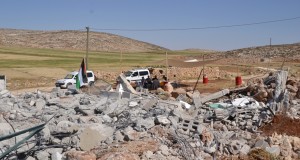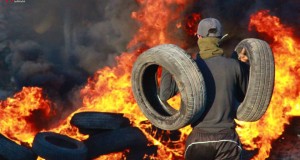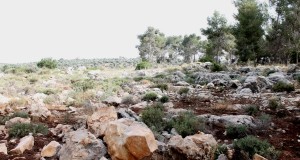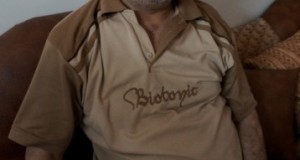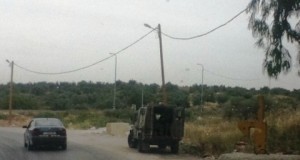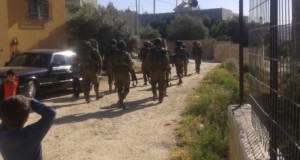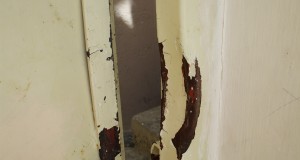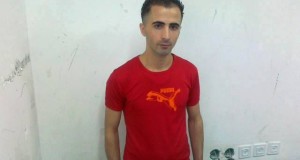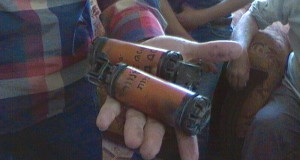30th April 2014 | International Solidarity Movement, Nablus Team | Khirbet al-Taweel, Occupied Palestine Update 15th May: On Monday the 12th of May, at 7AM, approximately 350 Israeli soldiers, two buses, and several military jeeps arrived at the remote village of Khirbet al-Taweel and ordered the ...
Read More »14 more arrested as Israeli army intensifies arrest campaign in Kafr Qaddum
13th May 2014 | International Solidarity Movement, Nablus Team | Kafr Qaddum, Occupied Palestine Update 13th May: The eight youths arrested and held following the night raid in Kafr Qaddum have court on the 15th May, at Salem Court, near ...
Read More »UPDATED: Murad Eshtewi, and four Palestinian youths from Kafr Qaddum, still under custody after court hearing
12th May 2014 | International Solidarity Movement, Nablus Team | Kafr Qaddum, Occupied Palestine Second Update Tuesday 13th May: Murad Eshtwei’s next court day is Sunday 18th May at Ofer prison. Ream Harham, Mustafa Eshtewi, and Ahmad Hassan Eshtewi have a court ...
Read More »Almost three out of four houses in Izbat at Tabib are at risk of demolition
8th May 2014 | International Solidarity Movement, Nablus Team | Izbat at Tabib, Occupied Palestine Izbat at Tabib, a small town of approximately 300 people located in the northwest of the West Bank, has 33 houses with demolition orders pending. The town ...
Read More »Asira Attacked 4 Nights in a Row
7th May 2014 | International Women’s Peace Service | Asira al-Qibliya, Occupied Palestine Israeli army raided the village of Asira al-Qibliya (south of Nablus) at 1 am on 5 May, arresting a 21-year-old, brutally assaulting his uncle, and terrorising the family’s children with attack ...
Read More »Israeli army target children in Azzun
7th May 2014 | International Women’s Peace Service | Azzun, Occupied Palestine If the people of ‘Azzun seem nervous, they have a right to be. The town (population approximately 10,000) sits on crossroads – Qalqiliya is to the west, Nablus to the east, Salfit ...
Read More »Harassment in Awarta
2nd May 2014 | International Solidarity Movement, Nablus Team| Awarta, Occupied Palestine At 4.30 am on Wednesday the 30th of April; a group of Israeli soldiers broke into a family home in the village of Awarta, near the illegal settlement of Itamar. 11 soldiers ...
Read More »Six arrested in Burqa (Nablus) by the Israeli army with no reasons given
25th April 2014 | International Solidarity Movement, Nablus Team| Burqa, Occupied Palestine On the night of the 23rd to 24th of April, approximately 24 Israeli military vehicles entered the town of Burqa and arrested six Palestinian youths. The Israeli army forced its way ...
Read More »An overview into the lives of Palestinian prisoners and their families
23rd April 2014 | International Solidarity Movement, Nablus Team | Occupied Palestine The 17th of April was declared a day of commemoration and remembrance of Palestinian political prisoners in 1974. According to updated statistics from Addameer (Prisoner Support and Human Rights Association), there are ...
Read More »Israeli forces shoot tear gas into houses in Awarta village
20th April 2014 | International Solidarity Movement, Nablus Team| Awarta, Occupied Palestine On the 20th of April, five Israeli jeeps entered the village of Awarta. The Israeli forces broke into four houses and shot several tear gas and stun grenades ...
Read More » International Solidarity Movement Nonviolence. Justice. Freedom.
International Solidarity Movement Nonviolence. Justice. Freedom.
